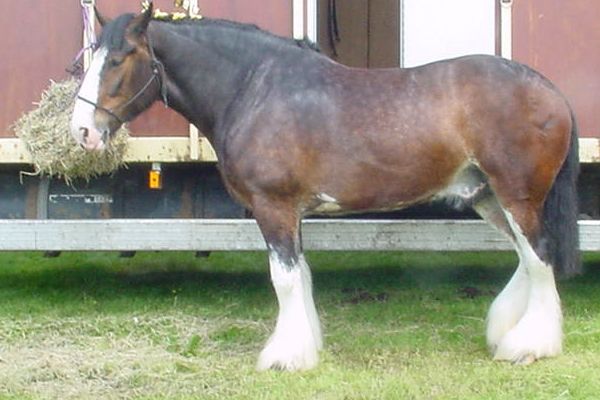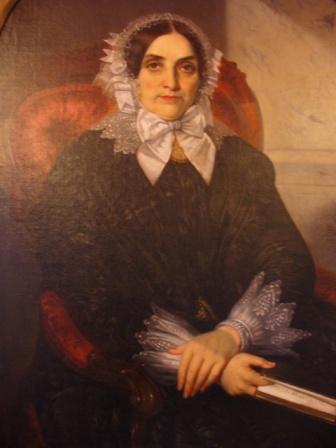|
Haras National D'Hennebont
The (English: Hennebont National Stud) is one of five equestrian centers in the Regions of France, French region of Brittany. It was created in 1856 in Hennebont, Morbihan, around the former Abbey of La Joie, as a result of an exchange with the Abbey of Notre-Dame de Langonnet. Inaugurated by Napoleon III on August 15, 1858, it was classified as a historic monument in 1995. The Haras National d'Hennebont has a long tradition of public stallion breeding, acquiring and making available stallions, mainly of the Breton horse, Breton breed, to breeders in its district. This historic function gradually came to an end between 2007 and 2016, with the transition from state management to that of a Syndicat Mixte. The national equestrian society housed there, founded in 1964, will cease operations in 2019. Now mainly devoted to tourism, the Haras National features a horse discovery area and a Combined driving, driving school, and organizes numerous shows and events throughout the year, inc ... [...More Info...] [...Related Items...] OR: [Wikipedia] [Google] [Baidu] |
Regions Of France
France is divided into eighteen administrative regions (, singular ), of which thirteen are located in metropolitan France (in Europe), while the other five are overseas regions (not to be confused with the overseas collectivities, which have a semi-autonomous status). All of the thirteen metropolitan administrative regions (including Corsica ) are further subdivided into two to thirteen administrative departments, with the prefect of each region's administrative centre's department also acting as the regional prefect. The overseas regions administratively consist of only one department each and hence also have the status of overseas departments. Most administrative regions also have the status of regional territorial collectivities, which comes with a local government, with departmental and communal collectivities below the regional level. The exceptions are Corsica, French Guiana, Mayotte and Martinique, where region and department functions are managed by single l ... [...More Info...] [...Related Items...] OR: [Wikipedia] [Google] [Baidu] |
Langonnet
Langonnet () is a commune in the Morbihan department of Brittany in north-western France. Geography Langonnet is in north-west of Cornouaille, in Lower Brittany. It is one of the few Cornouaille parishes to be located in the present-day Morbihan department. Thus, the main language was Breton until the advent of intensive farming after the Second World War, at which point the population, previously bilingual, switched to French. The parish comprises two main settlements: * the actual town of Langonnet in the south * the town of La Trinité-Langonnet in north-east In the south-east is the former Langonnet Abbey (''Abbaye Notre-Dame de Langonnet''). Topography The highest point of the parish is the ''calotte Saint Joseph'', a round hill whose top is 292 meters above sea level. It offers a good view of the surrounding area, most of the parish being at 190-meter level. Neighboring communes Langonnet is bordered by Plouray and Priziac to the east, Le Faouët to the so ... [...More Info...] [...Related Items...] OR: [Wikipedia] [Google] [Baidu] |
Draft Horse
A draft horse (US) or draught horse (UK), also known as dray horse, carthorse, work horse or heavy horse, is a large horse bred to be a working animal hauling freight and doing heavy agricultural tasks such as plowing. There are a number of breeds, with varying characteristics, but all share common traits of strength, patience, and a docile temperament. While indispensable to generations of pre-industrial farmers, draft horses are used today for a multitude of purposes, including farming, draft horse showing, logging, recreation, and other uses. Draft breeds have been crossbred with light riding breeds such as the Thoroughbred to create sport horses or warmbloods. While most draft horses are used for driving, they can be ridden and some of the lighter draft breeds are capable performers under saddle. Characteristics Draft horses are recognizable by their extremely muscular build. They tend to have broad, short backs with powerful hindquarters. In general, they are t ... [...More Info...] [...Related Items...] OR: [Wikipedia] [Google] [Baidu] |
Thoroughbred
The Thoroughbred is a list of horse breeds, horse breed developed for Thoroughbred racing, horse racing. Although the word ''thoroughbred'' is sometimes used to refer to any breed of purebred horse, it technically refers only to the Thoroughbred breed. Thoroughbreds are considered "Hot-blooded horse, hot-blooded" horses that are known for their agility, speed, and spirit. The Thoroughbred, as it is known today, was developed in 17th- and 18th-century England, when native mares were Crossbreed, crossbred with imported stallion (horse), stallions of Arabian horse, Arabian, Barb horse, Barb, and Turkoman horse, Turkoman breeding. All modern Thoroughbreds can trace their pedigrees to three stallions originally imported into England in the 17th and 18th centuries, and to a larger number of foundation bloodstock, foundation mares of mostly English breeding. During the 18th and 19th centuries, the Thoroughbred breed spread throughout the world; they were imported into North America ... [...More Info...] [...Related Items...] OR: [Wikipedia] [Google] [Baidu] |
Arabian Horse
The Arabian or Arab horse ( , DIN 31635, DMG ''al-ḥiṣān al-ʿarabī'') is a horse breed, breed of horse with historic roots on the Arabian Peninsula. With a distinctive head shape and high tail carriage, the Arabian is one of the most easily recognizable horse breeds in the world. It is also one of the oldest modern breeds. Although modern DNA cannot trace breed purity in the modern population beyond 200 years, there is archaeological evidence of horses in the Middle East with landrace characteristics that resemble modern Arabians dating back 3,500 years. Arabian horses have spread around the world by both war and trade, being used to improve other breeds by adding speed, refinement, endurance, and strong bone. Today, Arabian bloodlines are found in almost every modern breed of riding horse. The Arabian developed in a desert climate and was prized by the nomadic Bedouin people, often being brought inside the family tent for shelter and protection from theft. Selective ... [...More Info...] [...Related Items...] OR: [Wikipedia] [Google] [Baidu] |
Norfolk Trotter
The Norfolk Trotter is a historical horse breed once native to East Anglia and Norfolk, England. It was said to be "a large-sized trotting harness horse originating in and around Norfolk". In 1542, King Henry VIII required the wealthy to keep a specified number of trotting-horse stallions. The breed was well established in Norfolk, and later became known as the Norfolk Trotter. The most influential sire in its history is the half-bred stallion Shales (foaled 1755), also known as "Old Shales". Shales' Thoroughbred sire, Blaze (foaled 1733), was a son of the great racehorse Flying Childers (a descendant of the Darley Arabian, one of the three foundation sires of the Thoroughbred). The Norfolk Trotter became the all-around travel horse in England at this time. In Yorkshire, the same breed was known as the Yorkshire Trotter. Both breeds were also known as roadsters. The term Norfolk/Yorkshire Roadster/Trotter is seen commonly in breed-history books; regardless of the name, all are t ... [...More Info...] [...Related Items...] OR: [Wikipedia] [Google] [Baidu] |
Anglo-Norman Horse
The Anglo-Norman horse is a warmblood horse breed developed in Lower Normandy in northern France. A major center of horse breeding, the area had numerous regional types that were bred to one another and then crossed with Thoroughbreds to form the Anglo-Norman. Various body types developed within the Anglo-Norman breed, two of which were split off to form the Norman Cob and French Trotter. The remaining types were eventually standardized, although there remained some criticism of the "hybrid (biology), hybrid" nature of the breed's equine conformation, conformation. However, it is successful as an international sport horse, especially in the sport of show jumping. The Anglo-Norman also contributed to the development of several other breeds in Europe and Asia. The Anglo-Norman was developed in the early 19th century, and along with Thoroughbred and local Norman blood, influences were seen from other breeds, including British and Russian trotting horses. By the mid-19th century, th ... [...More Info...] [...Related Items...] OR: [Wikipedia] [Google] [Baidu] |
Seigneur Breton Partant à La Chasse
A seigneur () or lord is an originally feudal title in France before the Revolution, in New France and British North America until 1854, and in the Channel Islands to this day. The seigneur owned a seigneurie, seigneury, or lordship—a form of title or land tenure—as a fief, with its associated obligations and rights over person and property. In this sense, a seigneur could be an individualmale or female, high or low-bornor a collective entity, typically a religious community such as a monastery, seminary, college, or parish. In the wake of the French Revolution, seigneurialism was repealed in France on 4 August 1789 and in the Province of Canada on 18 December 1854. Since then, the feudal title has only been applicable in the Channel Islands and for sovereign princes by their families. Terms The English seigneur is borrowed from the French , which descends from Middle French , from Old French (oblique form of ''sire''), from -4; we might wonder whether there's a point a ... [...More Info...] [...Related Items...] OR: [Wikipedia] [Google] [Baidu] |
Blavet
The Blavet (; ) river flows from central Brittany and enters the Atlantic Ocean on the south coast near Lorient. It is long. The river is canalised for most of its length, forming one of the links in the Brittany canal system. It connects with the Canal de Nantes à Brest at Pontivy and runs to Hennebont, a distance of 60 km. From the last lock at Polvern, the river is tidal and considered as a maritime waterway, giving access to the seaport of Lorient and the Atlantic Ocean. It became more important when the western half of that system was cut off by the construction of the Guerlédan dam and hydropower plant. Today, boats coming from Nantes via Redon have to take the Canal du Blavet in order to reach the ocean near Lorient. The source of the Blavet is east of Bulat-Pestivien, Côtes-d'Armor. It flows through the following ''départements'' and towns: * Côtes-d'Armor: Saint-Nicolas-du-Pélem, Gouarec * Morbihan: Pontivy, Hennebont, Lorient Lorient (; ) is a ... [...More Info...] [...Related Items...] OR: [Wikipedia] [Google] [Baidu] |
Lamballe
Lamballe (; ; Gallo: ''Lanball'') is a town and a former commune in the Côtes-d'Armor department in Brittany in northwestern France. On 1 January 2019, it was merged into the new commune Lamballe-Armor. It lies on the river Gouessant east-southeast of Saint-Brieuc by rail. Lamballe station is served by high speed trains to Brest, Rennes and Paris, and regional trains to Brest, Saint-Brieuc, Dol-de-Bretagne and Rennes. History Lamballe was the capital of the territory of the Counts of Penthièvre, who in 1569 were made dukes. La Noue, the famous Huguenot leader, was mortally wounded in 1591 in the siege of the castle, which was dismantled in 1626 by Richelieu. The last Duke of Penthièvre granted his son Louis the title Prince of Lamballe. The Prince de Lamballe married Marie Therese de Savoie-Carignan and she took the title Princesse de Lamballe. The Princess lived with her father-in-law after the early death of her husband. She was a close friend of Queen Marie An ... [...More Info...] [...Related Items...] OR: [Wikipedia] [Google] [Baidu] |
Ille-et-Vilaine
Ille-et-Vilaine (; Gallo language, Gallo: ''Ill-e-Vilaenn'', ) is a departments of France, department of France, located in the regions of France, region of Brittany (administrative region), Brittany in the northwest of the country. It is named after its two main rivers, the Ille and the Vilaine. It had a population of 1,079,498 in 2019.Populations légales 2019: 35 Ille-et-Vilaine INSEE History Ille-et-Vilaine is one of the original 83 departments created during the French Revolution on 4 March 1790. It was created from part of the provinces of France, province of Province of Brittany, Brittany.Geography Ille-et-Vilaine is a part of the current region of Brittany and it is bordered by the departments of Manche to the north-east, Mayenne to t ...[...More Info...] [...Related Items...] OR: [Wikipedia] [Google] [Baidu] |







